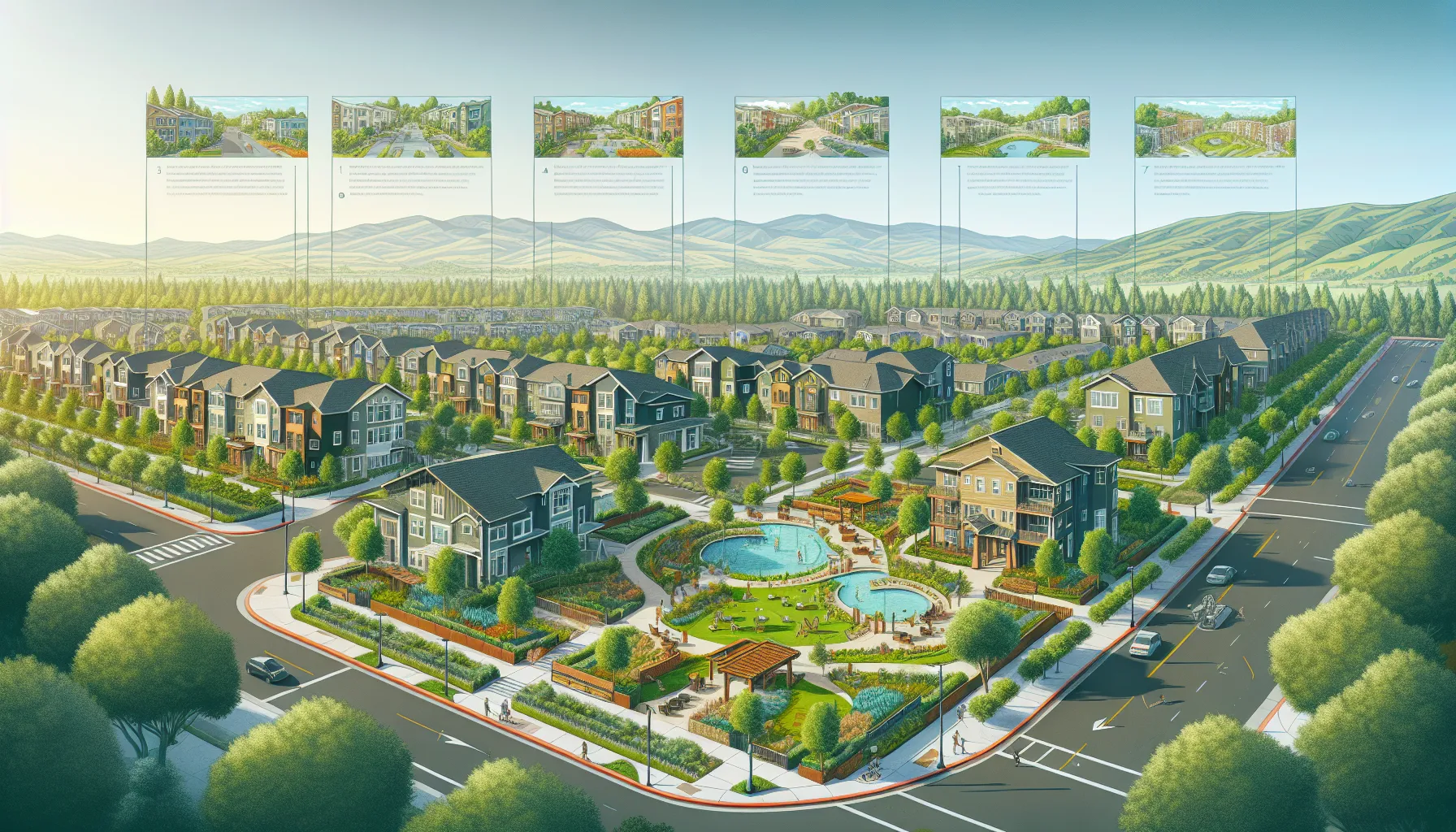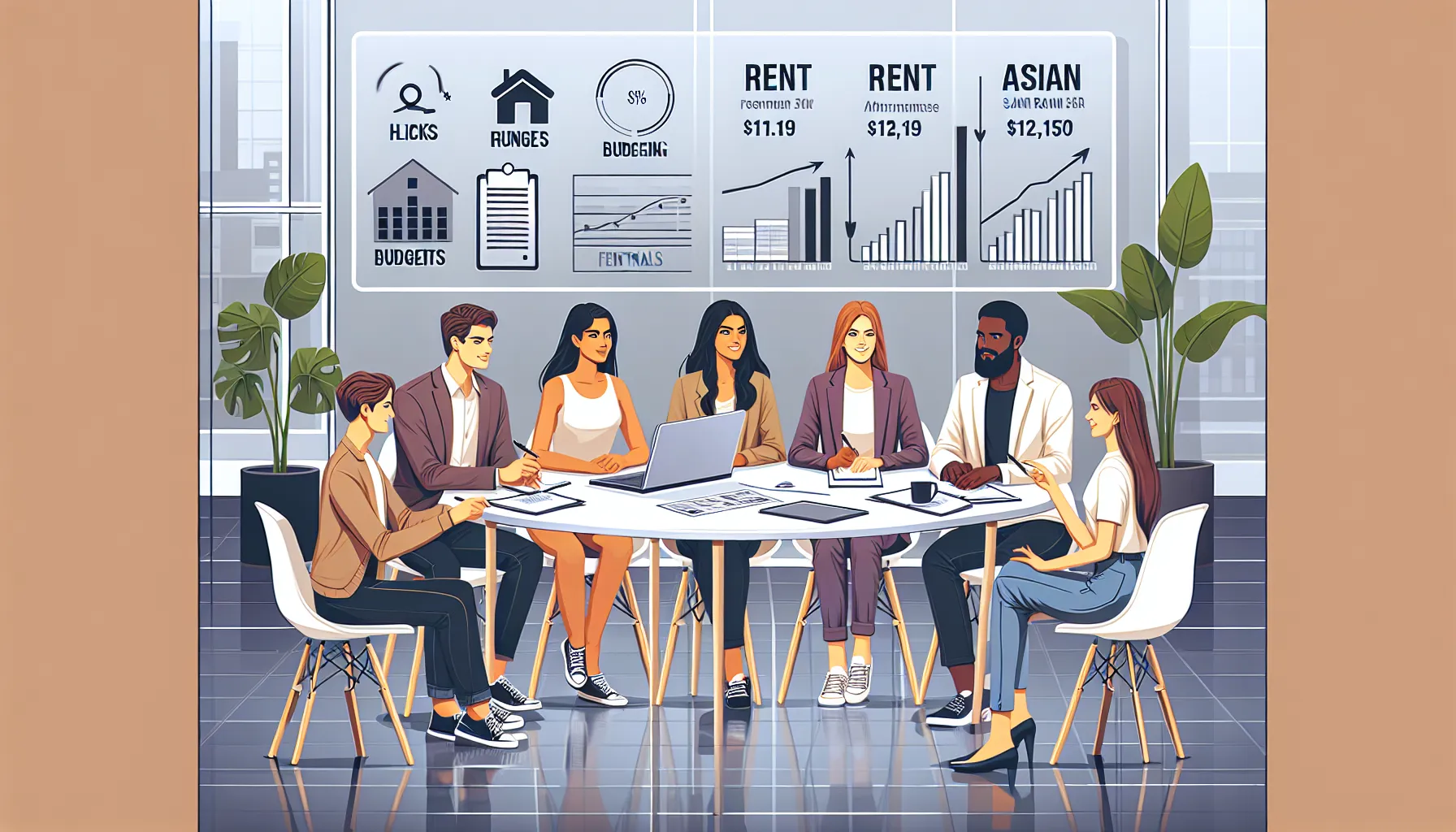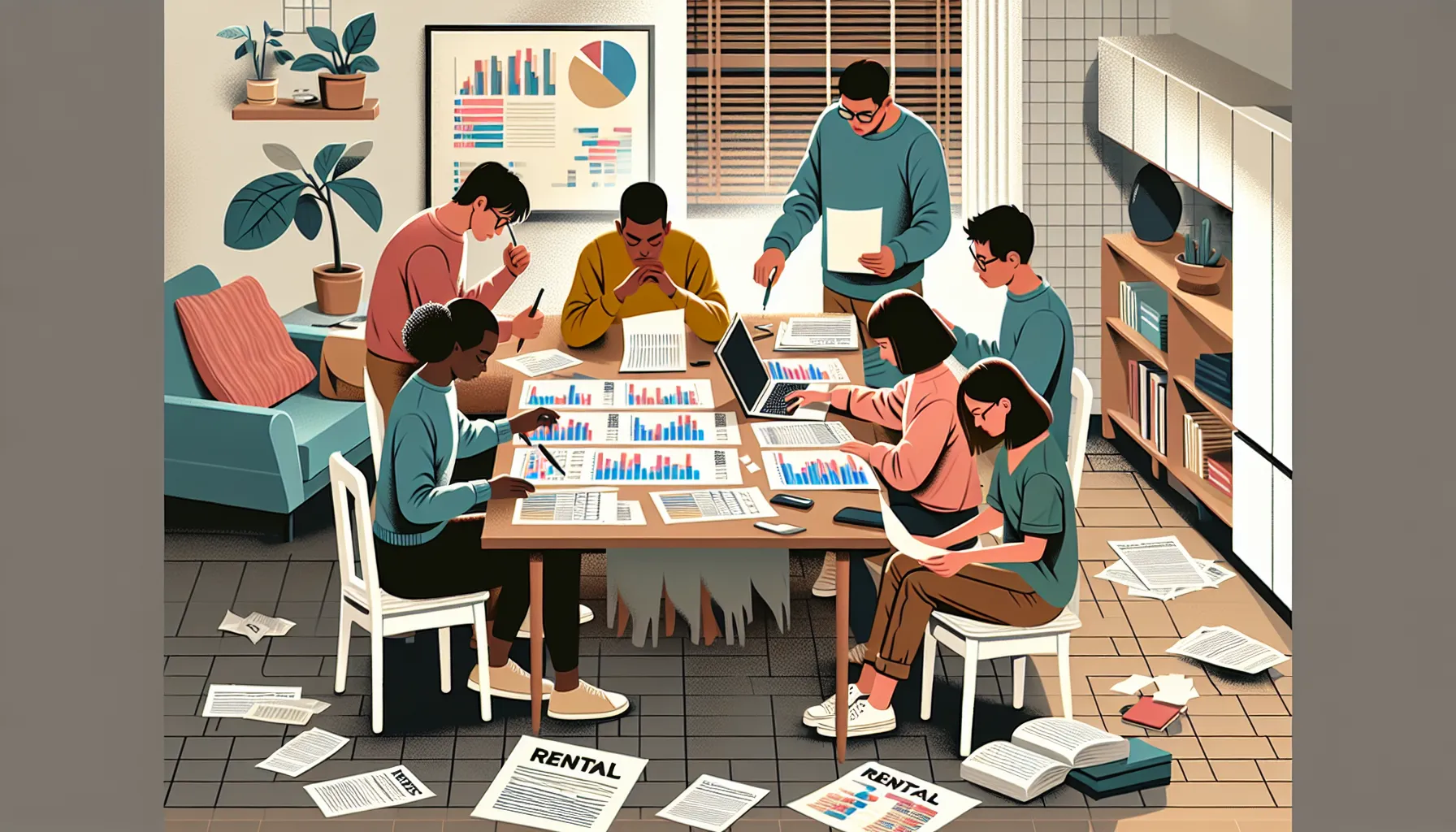Key Takeaways
- Plan a thorough rental budget for San Ramon by accounting for all costs, including management fees, maintenance, leasing, and marketing expenses.
- Consider factors influencing rental rates, such as property size, location, and seasonal market trends, to set realistic expectations.
- Use financial tools like budgeting apps and rent calculators to manage expenses and track savings effectively.
- Allocate funds for upfront expenses, including security deposits, leasing fees, and unexpected costs, to avoid financial strain.
- Avoid common mistakes like underestimating maintenance, ignoring hidden costs, or overcommitting to rent beyond 30% of your income.
- Stay informed about local rental market trends and use updated data to make budget-conscious decisions tailored to San Ramon’s dynamic housing market.
Planning a rental budget in San Ramon can feel overwhelming, especially with the area’s dynamic housing market. Whether you’re a homeowner renting out your property or an investor managing multiple units, understanding how to allocate costs effectively is crucial. Are you prepared for expenses like maintenance, leasing fees, or marketing your rental?
Every dollar counts when managing properties, and having a clear strategy can save time and resources. From setting aside funds for annual inspections to factoring in unexpected costs like insurance claims, a well-thought-out budget helps you stay ahead. How can you make sure you’re covering all the essentials while maximizing your returns?
A smart rental budget isn’t just about numbers—it’s about creating a system that works for your goals. By breaking down key expenses and planning proactively, you can manage your San Ramon property with confidence and ease. Let’s explore how to make that happen.
Understanding San Ramon Rental Budgeting
Creating a rental budget for San Ramon requires careful planning to account for all potential costs. Monthly management fees typically range from 6.5% to 7.5% of collected rents, depending on the service package chosen. These fees cover ongoing property management services, which can help simplify the rental process.
Leasing fees usually amount to $199 per lease agreement. This covers tenant placement and related administrative tasks. Additionally, an initial setup fee of $100 is common when establishing management services for a property.
Maintenance and inspections are recurring expenses. Semi-annual or annual inspections often cost around $75 per visit. For home improvement projects, property managers usually charge 7.5% of the project cost. These charges ensure properties remain in good condition while being cost-efficient.
Some expenses are situational. For instance, assisting an appraiser with property access costs $125. Processing insurance claims involves a fee of $100 for each claim filed. When properties are sold or leases end, closing out the property costs about $100.
Marketing efforts, including tools like social media boosts and online ads, typically require a $150 investment. This expense helps attract tenants by increasing the property’s visibility. Listing fees often make up 2% of the property’s value when placing it on the market.
What budgeting strategies work best for your rental property goals? Planning for both standard and unexpected expenses can reduce financial stress and improve your overall property management experience.
Factors Influencing Rental Costs In San Ramon

Understanding what shapes rental prices in San Ramon can help create a realistic budget. By examining key elements, property owners and renters alike can better prepare for associated costs.
Neighborhood and Location
Rental costs in San Ramon often vary depending on the neighborhood. Proximity to quality schools, parks, and shopping can increase demand, raising rental rates. Areas closer to highways or major business centers frequently attract higher premiums too. Which factors are most important to you in choosing where to live? Balancing preferences with budget is crucial.
Size and Type of Property
The size and layout of a property significantly affect rental costs. Larger homes with multiple bedrooms and updated amenities tend to command higher rents. Similarly, single-family homes usually cost more than apartments or condos. Would a smaller property better fit your needs and budget, or is additional space worth the higher cost? Evaluating priorities can clarify decisions.
Market Trends and Seasonality
Rental markets in San Ramon can be influenced by trends over time. During peak moving seasons, such as summer, competition drives rents higher. Conversely, winter months may provide better opportunities for finding lower prices. Have you considered how timing impacts your rental search? Exploring seasonal shifts could reveal cost-saving options.
Tips For Effective Rental Budgeting

Planning a rental budget can feel challenging, but breaking it into manageable steps helps create financial clarity. Here’s how you can effectively allocate your resources and prepare for renting in San Ramon.
Determining Your Budget
Start by identifying your total monthly income and calculate how much you can realistically spend on rent without overextending yourself. Experts often suggest keeping rent at no more than 30% of your gross income. For example, if your monthly income is $5,000, aim to spend around $1,500 on housing. Are you accounting for other recurring costs, such as utilities and transportation? Including these factors can prevent surprises later.
Think about the size and location of the property you want. Larger homes or rentals in high-demand neighborhoods might exceed your budget. Would you prefer proximity to schools or parks, or is a larger unit more important to you? Prioritizing your needs is essential to making budget-conscious decisions.
Balancing Utilities and Extras
Renting often comes with shared costs for utilities like water, gas, and electricity. Will utilities be included in your lease, or should they be added to your monthly rent? Estimate these expenses early. Common utility costs in San Ramon range widely depending on property size, with some renters paying between $100–$300 per month in utility bills. Consider optional expenses like internet and cable. Is a faster internet connection a priority for your personal or professional needs?
How can you save while maintaining comfort? Opt for energy-efficient spaces or rentals with amenities you’ll actually use, such as gyms or pools, instead of paying for extras you might not need. This approach can help align your overall costs with your financial plans.
Saving For the Initial Deposit and Fees
Securing a rental typically requires an upfront deposit and various fees. Most landlords request a security deposit equivalent to one month’s rent, along with the first month’s rent. For example, renting a $1,500 place means you might need $3,000 initially. Add leasing fees, which often cost around $199, and setup fees, averaging $100, into your calculations. Are these costs aligning with your savings?
Prepare for potential additional expenses. Some properties require fees for inspections, such as $75 per visit, or charges for processing insurance claims, often $100. Setting aside 10–15% of your budget for such unexpected costs can make your transition into a new rental more seamless. How prepared do you feel for these upfront commitments?
Tools and Resources For San Ramon Renters

Creating a rental budget in San Ramon requires smart tools and reliable information. With these resources, renters can make informed decisions and manage their finances effectively.
Budgeting Apps and Calculators
Digital tools simplify expense tracking and financial planning. Budgeting apps let users set spending limits, categorize expenses, and project savings. Many calculators are available online to estimate monthly rent limits based on income. Are you keeping all your costs in mind, like utilities and transportation? These tools help you track additional expenses alongside rent. Some apps also offer reminders for payment deadlines, credit tracking, and saving goals, creating a detailed financial overview for renters.
Local Rental Market Insights
Understanding San Ramon’s rental trends keeps renters prepared. Online platforms and housing market reports share valuable data on average rent prices and property availability in specific neighborhoods. Are you looking for homes near parks or top-rated schools? These factors often influence rent prices. Compare rental rates for different property types, like apartments and single-family homes, to find options within your budget. Staying aware of seasonality can also help—winter months often present opportunities to save on rent.
Common Mistakes To Avoid

Managing rental budgets in San Ramon can feel complex without proper planning. Avoiding common errors can save time, money, and effort. Are you making any of these mistakes?
- Ignoring Hidden Costs
Many overlook additional fees like maintenance, inspections, or marketing expenses. For example, semi-annual inspections may cost $75, and online ad campaigns can add $150 to monthly expenses. Including these costs upfront creates a more accurate budget.
- Underestimating Maintenance and Repairs
Skipping regular upkeep can lead to higher expenses later. Allocate around 7.5% of monthly rent for ongoing maintenance or unexpected property repairs. Is there room in your budget for emergencies?
- Overlooking Market Trends
Setting rent blindly without checking local demand often leads to vacancies or underpricing. Research neighborhood factors like school ratings and park accessibility to match competitive rates.
- Failing to Save for Upfront Expenses
Security deposits, leasing fees ($199), and setup charges ($100) are predictable but often forgotten. Saving around $3,000 for initial costs provides a financial cushion during the rental process.
- Relying on Outdated Tools or Data
Using inaccurate resources can misguide your financial planning. Reliable apps and updated market insights help track rent trends and identify potential savings opportunities.
- Overcommitting to Rent Proportion
Spending more than 30% of gross income on housing leaves less for utilities, transportation, and savings. Balancing rent with living expenses prevents financial strain.
Have you encountered any of these pitfalls? Adjusting your approach keeps the rental process smooth while preserving financial stability.
Conclusion
Navigating San Ramon’s rental market requires thoughtful planning and a clear understanding of potential costs. By staying proactive and leveraging the right tools, it’s possible to create a budget that aligns with both short-term needs and long-term goals. Whether you’re a property owner or renter, a well-structured approach to budgeting can make all the difference in reducing financial stress and maximizing opportunities in this competitive market.
Frequently Asked Questions
What is the recommended percentage of gross income to spend on rent in San Ramon?
Financial experts suggest spending no more than 30% of your gross monthly income on rent. This ensures you have enough budgeted for other necessary expenses like utilities, transportation, and savings.
What are the typical property management fees in San Ramon?
Property management fees in San Ramon typically range from 6.5% to 7.5% of collected rents. Additionally, there may be one-time setup fees of around $100 and leasing fees of approximately $199 per agreement.
How much should I budget for upfront rental costs?
For a $1,500 rental, upfront costs, including the security deposit and fees, can total around $3,000. These costs may vary based on rental agreements and property types.
What factors influence rental prices in San Ramon?
Rental prices in San Ramon are influenced by neighborhood desirability, proximity to amenities like schools and parks, property size and type, as well as market trends and seasonality. Larger homes and peak moving seasons generally drive higher rent prices.
How can I prepare for unexpected rental expenses?
Set aside 10-15% of your budget to cover unexpected costs, such as repairs, maintenance, or emergency fees. This safety net helps you manage unplanned expenses without financial strain.
Are there specific costs associated with rental property maintenance in San Ramon?
Yes, property maintenance costs often include inspection fees averaging $75 per visit and property management fees at 7.5% of home improvement project costs. These recurring expenses should be factored into your budget.
What tools can I use to simplify rental budgeting?
Budgeting apps and calculators are excellent tools to track monthly expenses, set spending limits, and plan savings. Online platforms also provide local market insights, aiding in informed financial decisions.
How can I save on utilities in a rental property?
Opt for energy-efficient rentals and estimate monthly utility costs, which may range from $100 to $300. Energy-saving practices and devices can reduce these costs significantly.
What are common mistakes to avoid in rental budgeting?
Common mistakes include ignoring hidden costs, underestimating maintenance needs, and spending more than 30% of your income on rent. Avoid outdated rental data and failing to save for upfront or unexpected expenses.
When is the best time to look for affordable rentals in San Ramon?
Winter months generally offer better opportunities for lower rental prices, as demand decreases outside of peak moving seasons. By timing your search strategically, you may find more affordable options.
